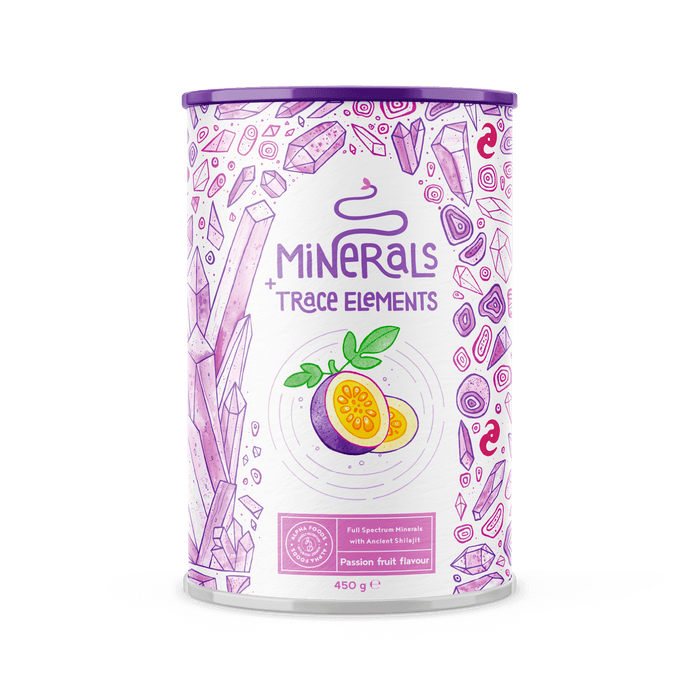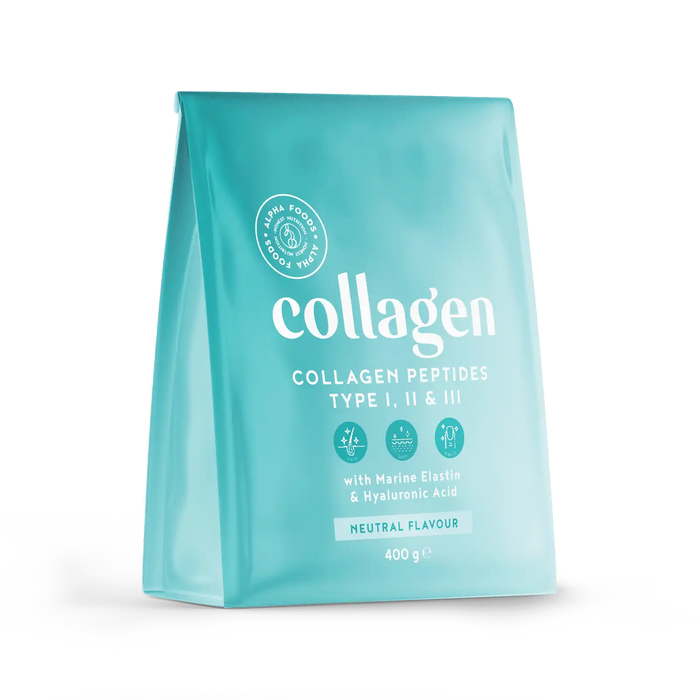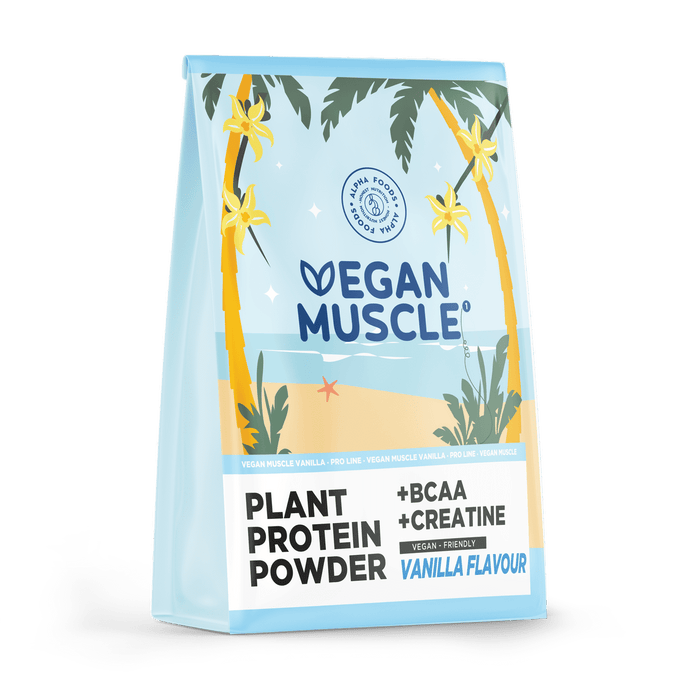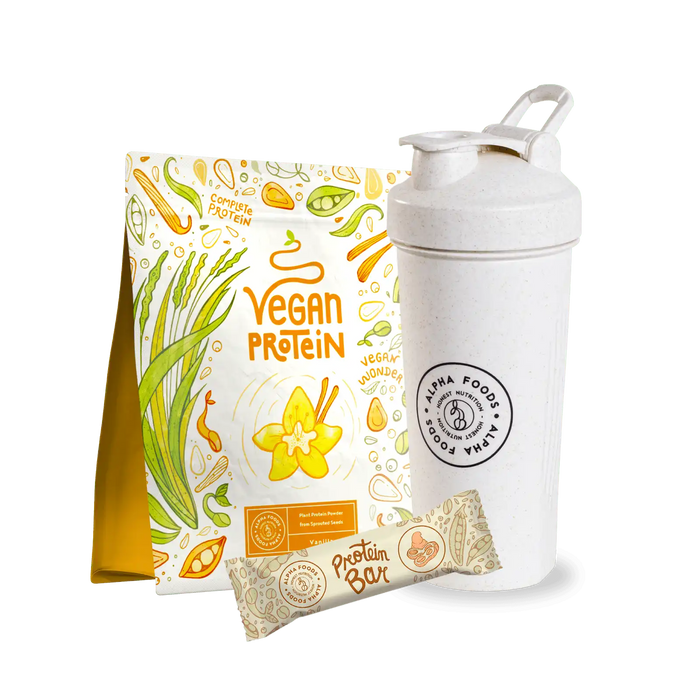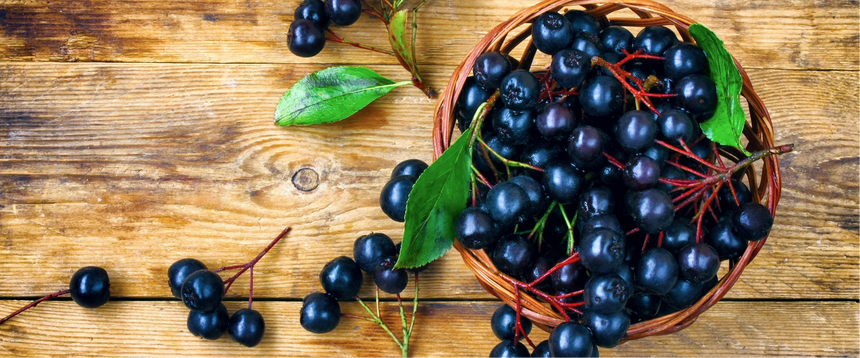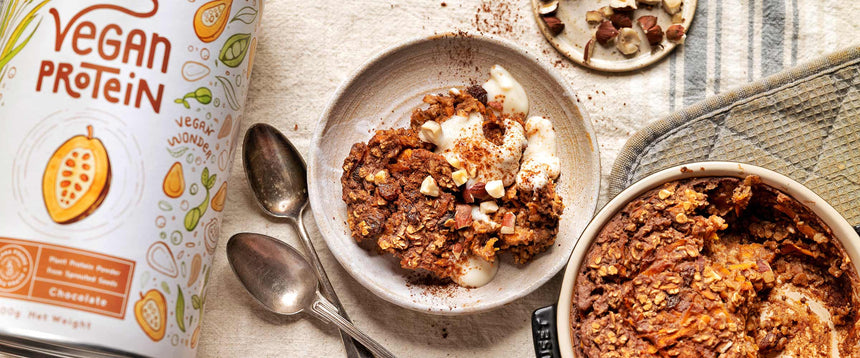was added to your cart.
Protein breakfast 101: How much protein is ideal?

Protein breakfast 101: How much protein is ideal?
The importance of a healthy breakfast has become more prominent in recent years. Many are looking for ways to start their day with energy and vitality - whether in preparation for work, school or before an activity-packed weekend. One of the buzzwords that is coming up more and more often in this context is "protein breakfast" or often called "high protein breakfast". In this blog article we will look at the topic in detail and clarify the most important questions: How much protein for breakfast is ideal? How can a quick protein bowl be prepared? And can a high-protein breakfast even help you lose weight?
Why is a protein-rich breakfast important?
Proteins are an indispensable group of nutrients that our bodies need for numerous functions: They are building blocks for muscles, skin, hair and even many hormones and enzymes. A high-protein breakfast can help start the day full of energy and boost physical and mental performance.
A high protein breakfast usually contains between 25-40g of protein. Ideally, after an overnight fast, you offer your body particularly high-quality protein that contains all the essential amino acids and thus promotes natural protein synthesis in the body. The average protein content of breakfast for most Europeans is still less than 20g. However, more and more research shows that a higher protein intake in the morning has many benefits:
A high-protein breakfast
- Provides lasting satiety: A high-protein breakfast has been shown to reduce appetite and increase satiety throughout the morning compared to "breakfast skipping" or eating a breakfast with a normal protein content. (1)
- Helps with weight loss: A high-protein breakfast reduces hunger and cravings throughout the day and can optimise food intake, which has a positive impact on weight regulation. (2)
- Stabilises blood sugar levels: In one study, a 500-calorie breakfast with at least 35 per cent protein (44 grams) resulted in lower blood sugar levels compared to those who ate a low-protein, high-carbohydrate breakfast. (3)
- Gives long-lasting energy: Study results show a connection between a high protein breakfast and improved mood, attention and concentration. (4)
- Promotes muscle growth: A new study concluded that proteins eaten in the morning promote muscle growth more than proteins eaten later in the day. (5)
Examples of a protein-rich breakfast
Protein Breakfast Bowl with Oatmeal
Oatmeal is an excellent choice for a protein-rich breakfast. They not only contain protein, but also fibre, which provides long-lasting satiety. By adding cottage cheese or protein powder, you can further increase the protein content of the bowl and enjoy a delicious and healthy start to the day - such as with this protein breakfast bowl with chia and red berries.

Protein Pancakes
Protein-rich breakfast pancakes were originally a recipe variant that emerged among fitness enthusiasts and are becoming increasingly popular today. They can be prepared quickly with just a few ingredients such as banana, flour or oatmeal, protein powder and plant milk. If you want to add a little more zing to the recipe, try these fluffy pancakes with banana and cocoa!
Breakfast Protein Smoothie
If you can't or don't want to eat solid food in the morning, breakfast smoothies are still good for you - especially if you add extra protein. A vegetable protein powder made from multicomponents is a particularly good fit here, as it is a good alternative to Whey and still provides all the essential amino acids and BCAAs. A delicious example is this vanilla blueberry protein shake.

Scrambled Tofu
Scrambled tofu, or "vegan scrambled eggs", is a nutritious, all-vegetable dish often used as a substitute for scrambled eggs or other egg dishes. Tofu is a good plant-based source of protein, making it a popular classic dish, especially for breakfast or brunch!
This is how easy it is to prepare a high protein breakfast
Step 1: Choose a protein source
Start with a high quality protein source such as:
- Eggs: Scrambled eggs, boiled eggs or omelets are quick ways to prepare. (Protein: approx. 6-7 g per egg)
- Greek yoghurt: A low-fat variety is best. (Protein: approx. 10-15 g per 100 g)
- Milk or milk alternative: You can use either normal milk, almond milk, soy milk or oat milk. (Protein: approx. 3-4 g per 100 ml)
- Protein powder: Can easily enrich any meal with extra protein and low-calorie taste. (Protein: approx. 20-25 g per portion)
- Curd cheese or cottage cheese: Are rich in protein and can be combined very well with fruits or nuts. (Protein: approx. 10-15 g per 100 g)
- Tofu: Ideal for vegan options such as tofu scrambles or even tofu smoothies. (Protein: approx. 8-10 g per 100 g)
- Meat: Lean meats such as chicken or turkey can be a hearty source of protein. (Protein: approx. 25-30 g per 100 g).
Step 2: Add fibre
Fibre helps to keep you full and stabilise blood sugar levels. Here are some high-fibre options:
- Whole-grain products: Choose wholemeal bread instead of white bread, alternatively oatmeal or wholemeal pancakes for long-chain, complex carbohydrates.
- Vegetables or fruit: The '5 a day' recommendation starts with breakfast. Make it a goal to mix in a serving of fruit or vegetables.
- Nuts and seeds: Almonds, chia seeds or flax seeds are rich in fibre and healthy fats, which leads us to the next point.
Step 3: Make sure you eat healthy fats
Healthy fats are important for a balanced diet and can make your breakfast even more filling. Here are some options:
- Avocado: Half an avocado is usually an adequate serving for unsaturated fats. Sliced or mashed as guacamole, avocado can add a creamy taste to your breakfast.
- Nuts and seeds: Are especially ideal to use as toppings. Seeds such as chia and flaxseed also mix well in smoothies.
- Olive oil: A light drizzle of olive oil over vegetables or salads can be delicious.
- Flax oil or chia seeds: These are rich in omega-3 fatty acids and can be added to yoghurt or oatmeal.
Step 4: For an extra kick of nutrients
To make your high-protein breakfast interesting, you can flavour it with nutrient-rich spices and natural sweeteners. Here are some ideas:
- Spices: Use cinnamon, vanilla, lemon zest or ginger to vary the flavour.
- Matcha powder or spirulina: You can also add nutrient-rich powders like matcha, spirulina or even turmeric to bowls and smoothies for that extra bit of valuable antioxidants. Protein powders like Morning Fuel, for example, already contain high-quality matcha, which gives your breakfast a great green colour.
- Sweetening: A touch of honey, maple syrup or stevia can add a pleasant sweetness to your breakfast. However, be sure to use a moderate amount or use a protein powder with natural stevia sweetener to avoid unnecessary calories.
- Herbs: Fresh herbs like cilantro, basil or parsley can add more vitamins and phytochemicals to your meal.
By following these steps and combining different ingredients, you can create a protein-rich breakfast according to your preferences and needs. Remember to keep an eye on portion sizes and adjust the amount of protein, fibre and healthy fats according to individual goals.
Stefanie Schulz











